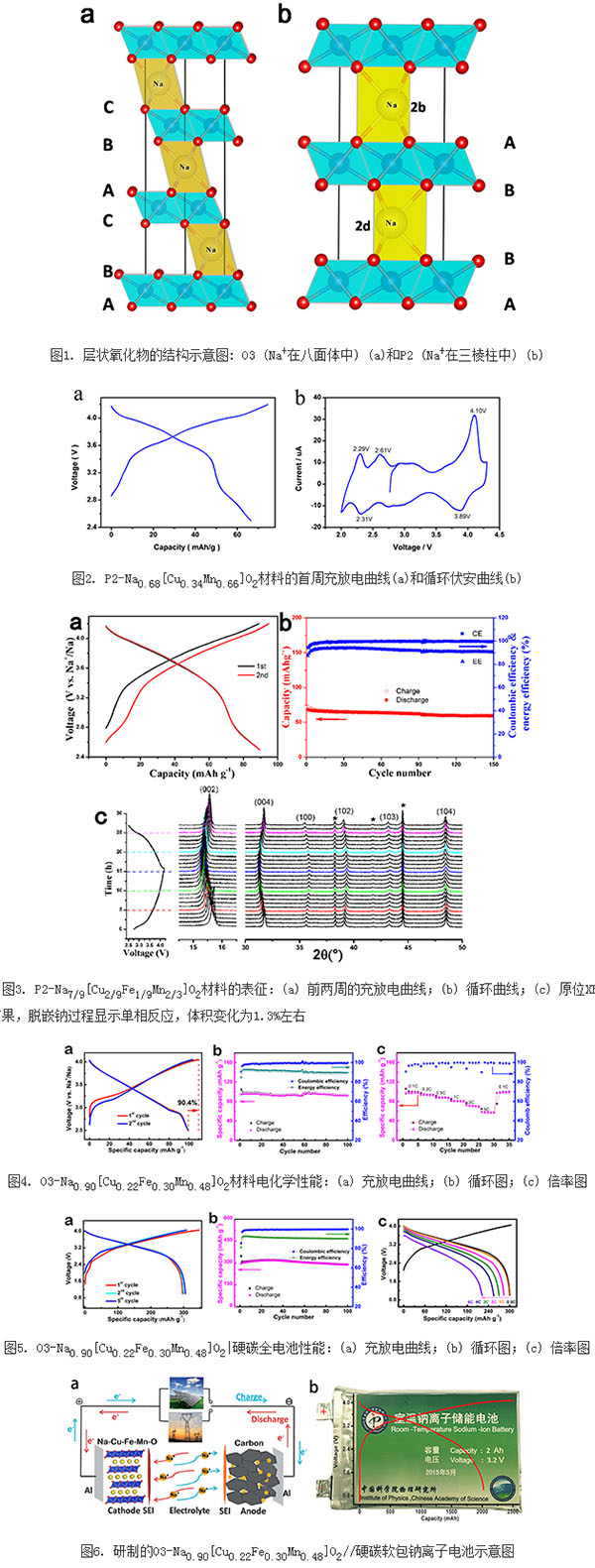Large-scale energy storage technology is one of the key technologies for renewable energy utilization and smart grids, and it is still in its early stages of development. Compared with other energy storage technologies, room temperature sodium ion batteries have many advantages such as abundant resources, low cost, high energy conversion efficiency, long cycle life, low maintenance cost, and the like. Finding the low cost and excellent performance of sodium ion battery electrode material is one of the key to realizing the practical application of sodium ion energy storage battery. At present, there are many research reports on layered cathode materials for sodium ion batteries, but most of them contain transition metal Ni or Co, and Ni and Co are widely used elements in lithium ion battery cathode materials, and their cost is reduced in the use of sodium ion batteries. Space is limited, so Ni and Co are not the preferred elements of cathode materials for sodium-ion batteries; and these materials are not stable in the air, are prone to absorb water, or chemically react with water-oxygen (carbon dioxide), which will undoubtedly increase the production and transportation of materials. Storage costs, and it will affect the battery performance. Therefore, in order to realize the practical application of sodium ion batteries, it is necessary to develop electrochemically active elements that can replace Ni or Co and stable new electrode materials.
Institute of Physics, Chinese Academy of Sciences/Beijing National Laboratory for Condensed Matter Physics (CPC) Clean Energy Laboratory E01 Research Group Ph.D. Student Xu Shuyin and Researcher Hu Yongsheng, etc. took a different approach and found that transition metal Cu could be realized in the layered material of sodium-ion battery Cu3+/Cu2+ Reversible conversion of redox couples. First, they designed and prepared P2 phase layered oxide materials Na0.68[Cu0.34Mn0.66]O2 and Na0.68[Cu0.34Mn0.50Ti0.16]O2 (Cu in the oxide is 2+, Mn and Ti is 4+). As a positive electrode material, reversible sodium ions can be released, and the corresponding sodium storage potential is 3.2 V vs. Na+/Na. This is the first time that Cu3+/Cu2+ redox has been truly realized in the secondary battery. The reversible transition of the electricity pair and the very small electrochemical polarization are the latest breakthroughs in the research in this field at home and abroad. The results of this important research are given priority in Chinese scientific journals Chinese Physics B, 2014, 23, 118202. This provides a new direction for the design and development of cathode materials for room temperature sodium ion batteries. Based on this, they have also designed a series of sodium-ion battery layered cathode materials containing copper, iron, and manganese elements that are more practical: P2 -Na7/9[Cu2/9Fe1/9Mn2/3]O2 and O3-Na0.90[Cu0.22Fe0.30Mn0.48]O2.
Ph.D. student Li Yunming and researcher Hu Yongsheng replaced some of the Cu elements with lower-cost transition metal Fe elements, resulting in P2-Na7/9[Cu2/9Fe1/9Mn2/3]O2 materials with excellent electrochemical properties, which are 2.5-4.2. The reversible storage capacity of sodium in the voltage range of V is up to 90 mAh g-1. The biggest advantage of this material is that its structure maintains the P2 phase in the process of electrochemical sodium removal and its volume change is only about 1.3%. During charging and discharging, small volume changes are conducive to long cycle performance (see Advanced Science, 2015, 2, 1500031, doi: 10.1002/advs201500031).
Further, doctoral student Mulin Lin and researcher Hu Yongsheng designed a series of O3-phase layered oxide materials containing Cu, whose general formula can be written as Naa[Cu1-xyz-dFexMnyTizDd]O2 (D: dopant, eg, Li , Mg, Al, etc., 0<x<1, 0<y<1, 0≤z<1, 0≤d<1, 0.6<a≤1), and the redox reaction of Cu2+/Cu3+ is achieved. Among them, the O3-Na0.90[Cu0.22Fe0.30Mn0.48]O2 positive electrode material can realize the reversible deintercalation of 0.4 sodium ions with a reversible capacity of 100 mAh/g. The cathode material of the sodium ion battery is the only O3 phase layered oxide material found so far that is stable in the air; and the cycle performance is excellent, and the capacity retention rate is 97% after 100 cycles. The sodium ion full battery assembled using this material as the positive electrode and hard carbon as the negative electrode has an energy density of 210 Wh/kg (calculated based on the mass of the positive and negative active materials), a power conversion efficiency of 90%, and excellent rate performance (6C charge). Discharge, capacity retention rate 74%) and cycle performance. Based on this, the research team has developed a 2Ah soft-packaged sodium-ion battery. After further optimization, the actual energy density can reach 100Wh/kg. This laid a good foundation for the subsequent realization of a low-cost, environmentally friendly room temperature sodium ion battery. The relevant research results were published in Chinese Physics B, 2015, 24, 038202 and Advanced Materials, 2015, 27, 6928-6933.
This series of work was supported by the National Natural Science Foundation of China's Outstanding Youth Fund, the "863" Innovation Team Project of the Ministry of Science and Technology, the Innovation Group of the Committee and the 100-person Plan of the Chinese Academy of Sciences.

SUNPLUS MASKING TAPE Professional Automotive High Temperature Resistance. With a high temperature resistant masking tape coated with rubber based and has good stick firmness.
70°C Masking Tapes,Automotive Masking Tape,Auto Paint Masking Tapes,Rubber Based Masking Tape
GUANGZHOU SUNPLUS TECHNOLOGY CO.,LTD , https://www.sunplussandpaper.com